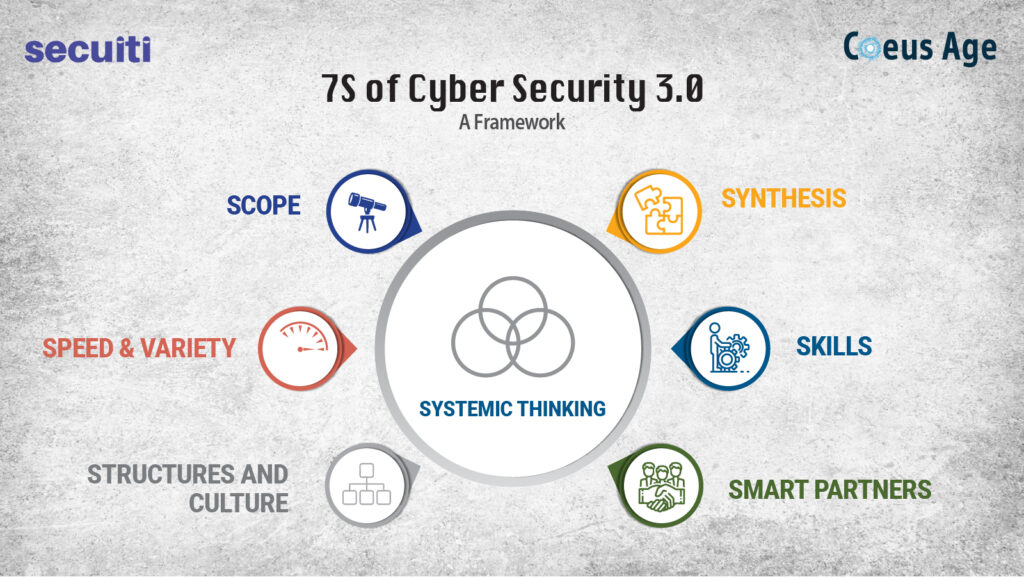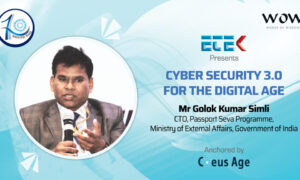Cyber Security 3.0 represents a novel paradigm defined by the 7S elements. It is essential for enterprise leaders to take these components into account in order to establish a suitable and adaptive security posture.

Systemic Thinking
The emerging paradigm necessitates a comprehensive approach to planning, design, and implementation of Cyber Security. It is perceived as an integrated entity rather than merely the aggregation of its components. Additionally, it is expected to align with strategic objectives, cultural dynamics, and to be incorporated within the risk management framework.
Scope
The realm of Cyber Security is continually expanding, encompassing data centers, networks, storage, applications, and data itself. Simultaneously, there is a growing demand emerging from the Operations Technology side.
Speed and Variety
The rapid emergence and diverse nature of new threats necessitate that enterprises implement a comprehensive cybersecurity strategy. This approach should encompass the establishment of a Security Operations Center (SOC) and the integration of agile methodologies such as DevSecOps.
Structures and Culture
Organizations must establish suitable frameworks and procedures to meet the requirements of Cyber Security 3.0. This includes the creation of a dedicated department, clearly defined leadership roles, governance, and operational structures, as well as teams possessing specialized skills for designing and managing a Network Operations Center (NOC) or a Security Operations Center (SOC). Additionally, fostering an appropriate culture is crucial for encouraging members to adopt desired behaviors.
Synthesized Tech Platform
The cyber security landscape is frequently disjointed and characterized by isolated segments. To effectively address threats and their implications across the enterprise, a cohesive and comprehensive cyber security platform is essential. This platform should utilize automation, analytics, and artificial intelligence to deliver a unified view of the IT environment, enabling real-time threat analysis and response capabilities.
Specialized Skills
One significant challenge confronting cyber security leaders is the deficiency of cyber security expertise within the organization. This expertise is essential for managing a cohesive environment and also encompasses the need for general employee awareness regarding suitable conduct.
Smart Partners
Cyber Security 3.0 represents a dynamic framework that necessitates ongoing environmental assessment and knowledge acquisition to maintain a competitive edge. It is imperative for organizations to collaborate, as no single entity can navigate this landscape independently; thus, the current demand is for a network of intelligent partners working collaboratively.

















